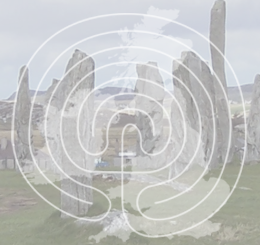Segontium Roman Fort
This is the remains of a Roman auxiliary fort, one of the largest, and last to be abandoned by the Romans in North Wales. It was built by Gnaeus Julius Agricola in around 77 AD after his victory over the native tribe, the Ordovices. Situated in Caernarfon, which the town was probably named after ((Caer yn ar Fon) Fort opposite Mon), it is thought that it was occupied from 77 AD to approximately 395 AD. Segontium would have had an administrative role for North Wales, collecting taxes and organising local mining operations, as well as governing the tribal territory of the Ordovices and the lesser Gangani and Segontiaci tribes. Originally built of wood with a ditch and wooden palisade, it would have accommodated about a thousand men. It was later modernised using stone in around 140 AD. Being situated on high ground above the Menai Straits it held a strategic position controlling access to the Isle of Anglesey (Mona Insula (Roman) Ynys Mon (Welsh)) and protecting the coast from Irish raiders. The site covers an area of approximately 4.5 acres or 1.7 hectares, and had a south west alignment, towards the Ordovician stronghold at nearby Dinas Dinlle.
 The ancient site has been excavated extensively and the remains of the buildings are left exposed for visitors. There is a museum and visitor centre at the fort which holds findings that have been excavated over the years.
The ancient site has been excavated extensively and the remains of the buildings are left exposed for visitors. There is a museum and visitor centre at the fort which holds findings that have been excavated over the years.
Excavated buildings at Segontium include:
1) The remains of two bath houses which both had hot and cold plunge pools (unavailable to the soldiers).
2) A Mithraic Temple (now beneath nearby Lon Arfon) 170 metres east of the fort walls.
3) Several barracks
4) A large building with a courtyard
5) Store Houses
6) Workshops
The extended buildings of the site including the civilian settlements are now beneath modern housing, notably Cae’r Saint and Maes Barcer.
King Edward I plundered the stone from the fort for the construction of his castle at Caernarfon, which began in 1283.
The site is now bisected by the A4085 Ffordd Cwstenin (Constantine Road) which goes to Beddgelert. When the fort was occupied, it was linked by roads to the Roman forts at Deva Victrix (now Chester) via Kanovium (near Conwy) to the east, and Pen Llystyn, Tomen-y-mur, and Caer gai to the south / south east.
Its place in Welsh Mythology occurs with ‘Breuddwyd Macsen Wledig’ (The Dream of Macsen Wledig) of the Mabinogion. Segontium is the castle that Macseb Wledig, (who was a Roman Emperor), saw in his dream of the beautiful maiden.



Re: Segontium Roman Fort
Would anyone know the whereabouts of St Helen’s holy well, which was said to be at Coed Helen, in Caernarfon. I have a feeling that the well still exists, in some form, but I’m not sure of its location. It was named for the Welsh St Elen, who according to the Legend, married the Roman general/emperor, Macsen Wledig. Would there be a grid reference for this well? Thanks in anticipation.